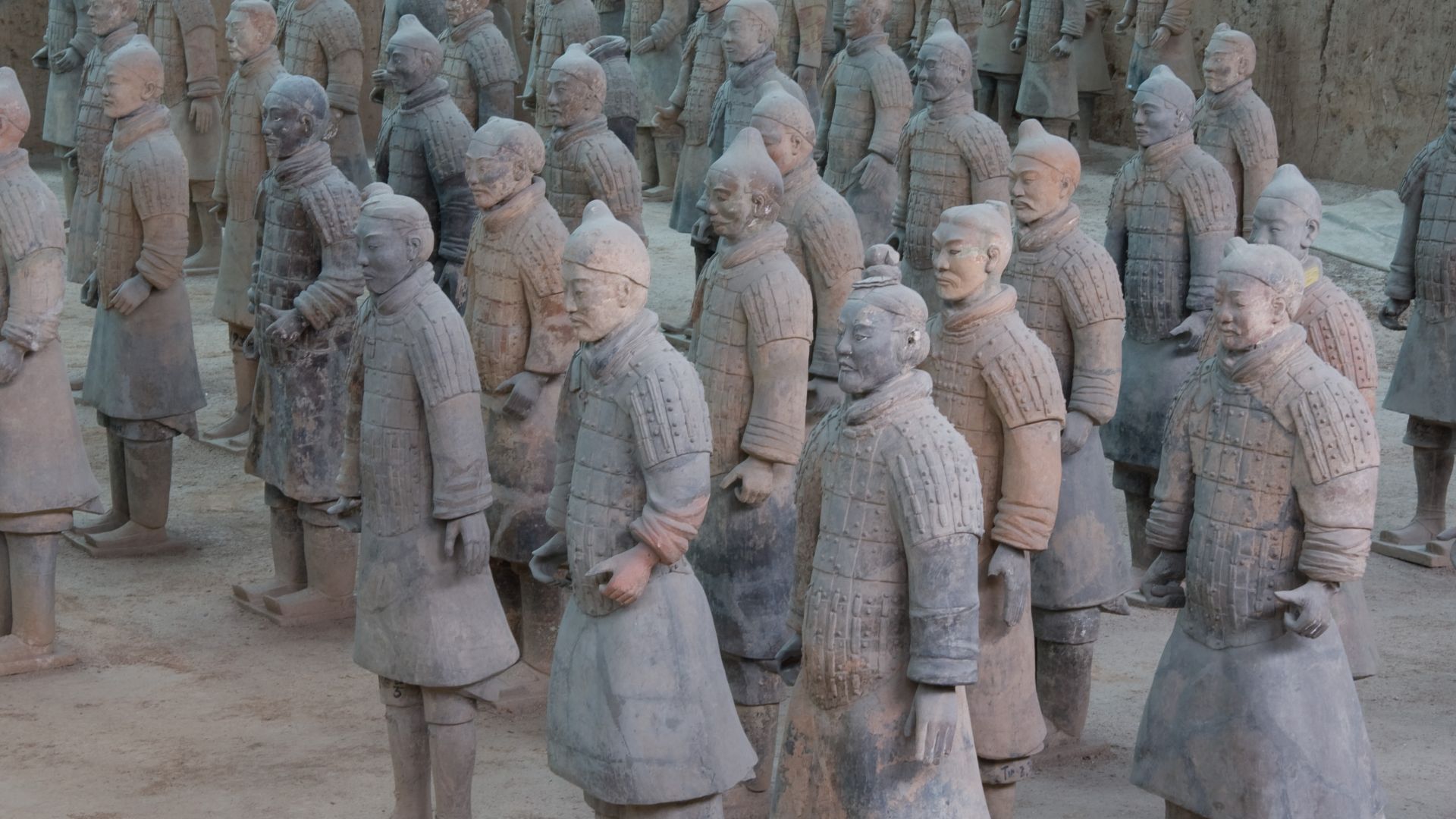 Maros M r a z (Maros) on Wikimedia
Maros M r a z (Maros) on Wikimedia
In March 1974, a group of unsuspecting farmers digging a well near Xi'an, China, quickly noticed that they struck something unusual. What they thought might be an old pottery kiln turned out to be one of the most intriguing archaeological discoveries of the 20th century.
Just a few feet underground lay thousands of life-sized clay soldiers, each one unique, standing in battle formation as they had for over 2,000 years. The farmers had stumbled upon the Terracotta Army, an underground force built to protect China's first emperor in the afterlife.
A Farmer's Shovel Unearths An Empire
Emperor Qin Shi Huang, who unified China in 221 BCE, began constructing his elaborate tomb complex shortly after taking power at age 13. Ancient records suggest that 700,000 workers labored for nearly four decades to complete this monumental project. The emperor believed he would need an army in death just as he had in life, so he commissioned craftsmen to create a terracotta replica of his military forces.
What makes this army truly remarkable is that no two soldiers are precisely alike. Each warrior has distinct facial features, hairstyles, and expressions, suggesting they may have been modeled after real members of the emperor's actual army.
An Army Of Thousands In Perfect Formation
The Terracotta Army has around 8,000 soldiers, 130 chariots with 520 horses, and 150 cavalry horses. The figures range from 5'8" to 6'5" in height, with generals being the tallest to denote their rank. The warriors are organized into four main pits, with Pit 1 containing the bulk of the infantry in a rectangular battle formation.
Pit 2 houses cavalry and infantry units, while Pit 3 appears to be the command post with high-ranking officers. A fourth pit was found empty, possibly left unfinished when the emperor died. Each figure was originally painted in bright colors, including pink, red, green, blue, and purple, though most of the pigment flaked off upon exposure to air during excavation.
The soldiers wear detailed armor, and archaeologists have identified different military ranks based on their uniforms and topknots. Incredibly, the warriors once held real bronze weapons, many of which remain sharp after more than two millennia underground. Some weapons were coated with chromium, an anti-rust technology not developed in the West until the 20th century.
Secrets Still Buried
Despite decades of excavation, archaeologists estimate that only about 1% of the entire tomb complex has been uncovered. The emperor's actual burial chamber remains sealed beneath a pyramid-shaped mound, and scientists are proceeding cautiously. Ancient texts describe the tomb's interior as containing rivers of mercury representing China's waterways, and recent soil testing has revealed extremely high mercury levels, suggesting these accounts may be accurate.
The Chinese government has intentionally slowed excavation to allow technology to advance, hoping future methods will better preserve artifacts that deteriorate rapidly when exposed to air. The Terracotta Army continues to reveal secrets, reminding us that sometimes the greatest stories lie waiting just beneath our feet.
KEEP ON READING

The 10 Youngest Monarchs In History & The 10 Oldest
Age Is Just A Number. Imagine being crowned king or…
By Chase Wexler Mar 11, 2025
WWI Messages in a Bottle Just Washed Up on Australia’s…
Jayne Harris on UnsplashA century-old message in a bottle was…
By Cameron Dick Nov 13, 2025
Written By The Victors: 20 Names History Books Tried To…
History’s Forgotten Figures. It is said that history is written…
By Farva Ivkovic Jun 23, 2025
Writing On The Wall: 20 Fascinating Hieroglyphics Throughout History
A Language Carved To Last. Hieroglyphics are unique, ancient writings.…
By Chase Wexler May 29, 2025
Women At War: 20 Fierce, Fearless, & Famous Female Fighters
How Many Of These Women Warriors Do You Know?. History…
By Emilie Richardson-Dupuis Aug 14, 2025
The Woman Without A Name
Mary Doefour was the woman without a name. In 1978,…
By Robbie Woods Dec 3, 2024

